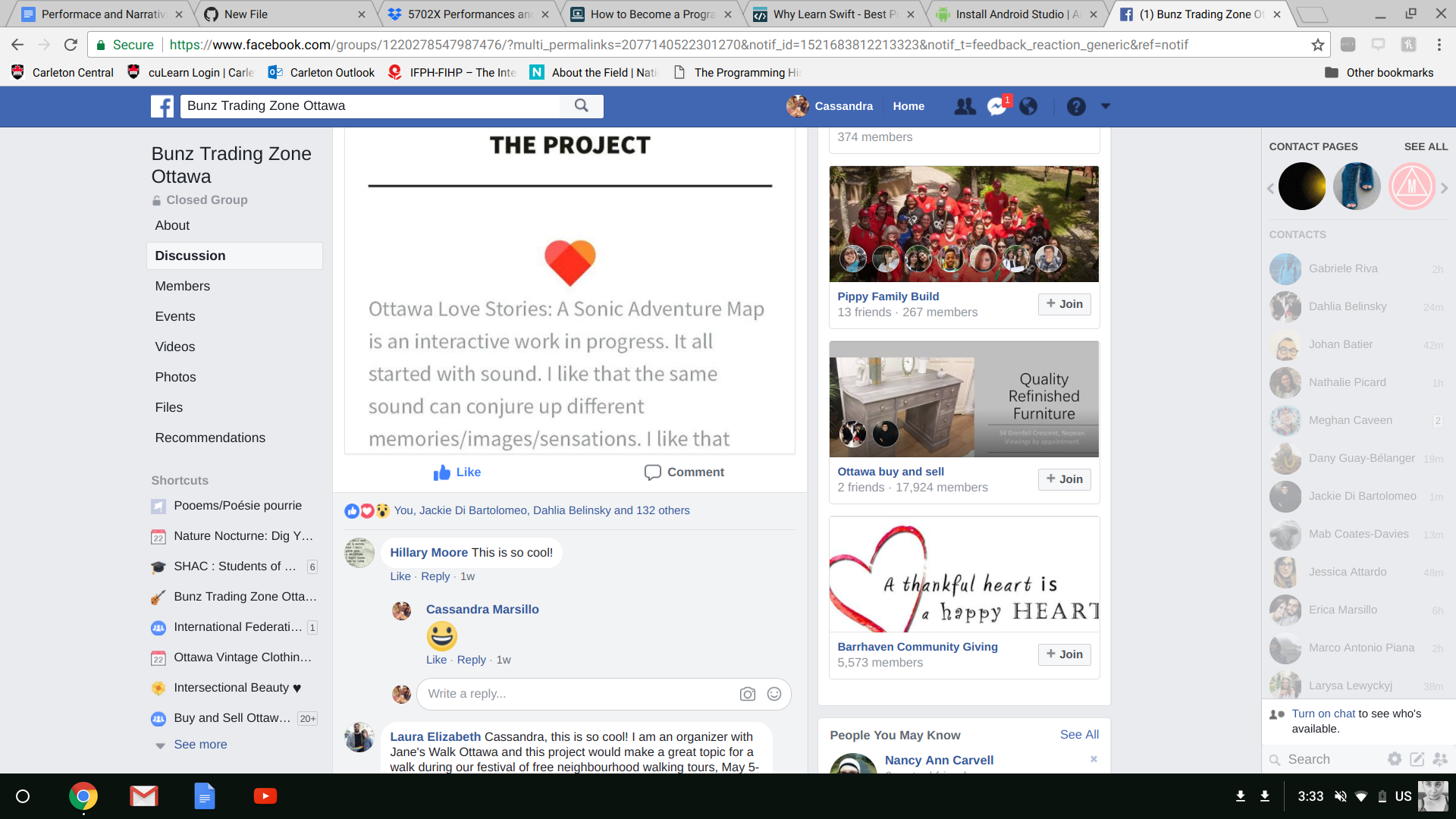Eleven.
I knew deep down that I always wanted this project to be interactive, and that, for me, meant getting out of the online newspaper archives. I wasn’t really inspired by anything I found on there, but I was excited about having the opportunity to interact with people about their past and present and passed down love stories. So I made the project website and shared it on my social media (Twitter, Facebook, and Instagram). While I got lots of support and positive feedback, I didn’t really get any submissions, which was really frustrating. After a week or two of nothing, I posted about the project on a Facebook group (Bunz) late at night, hoping to finally get some submissions but really only expecting to get a couple of responses. The next day, I realised that the Bunz post had exploded. It had over 100 likes and 20 comments; I already had a handful of messages and they kept coming in through the project email and messenger.

I got so many submissions that I had to stop accepting them in order to keep this project manageable for now. I had to create a Facebook page for the project because I couldn’t keep posted updates on the Bunz post, it was getting confusing. It was, in the moment, so exciting that people wanted to be a part of this project, talk about it with their friends, and share it with their partners. I couldn’t believe it: people also wanted to write their own blog posts about it, and asked to interview me. What. This is when the pressure got really real. There’s a different level of responsibility now, and expectations. I don’t want to let these people down. It was also important for me to tell them that their love stories - the sonified coordinates - would not sound “good.” It’s random, not purposefully composed to be a beautiful, sweeping love song. I think that was the most stressful part so far - showing them the sonified data from Patricia and Bud’s story. Thankfully, most people were still interested anyway, thought it was really neat, and I can move forward with their stories.
So, now, I’ve made a couple of decisions about my project:
- First, I won’t be including an e-textile map. I don’t think this will be useful in the end, especially since this has turned into a larger collaborative project
- Second, I won’t be using ARIS. This has become a more longterm project, and I would like it to eventually have its own platform. I don’t want to upload everything onto ARIS only to have to change it after
- Instead, I’ll embed an interactive map on my website with the paths and sonified data, for now
- I’m also going to develop an audio walking tour with people that I’ve interviewed in person about their love stories (most people have just sent me details online, so this would only be with 1-3 stories)
- Eventually, I would like to try to create an app (let’s be honest, probably only by collaborating with someone) for the project
I honestly don’t know how sustainable this will be for the long-longterm, but I think that so many people want to share, there are so many stories to tell, that I want to (and it’s important to) keep going. I love the idea of collecting Ottawa’s love stories, in all their variations, complications, dark and light sides. I love that the places we pass by, the roads we cross, and the spaces we enter every day tell these stories, if we just listen.
